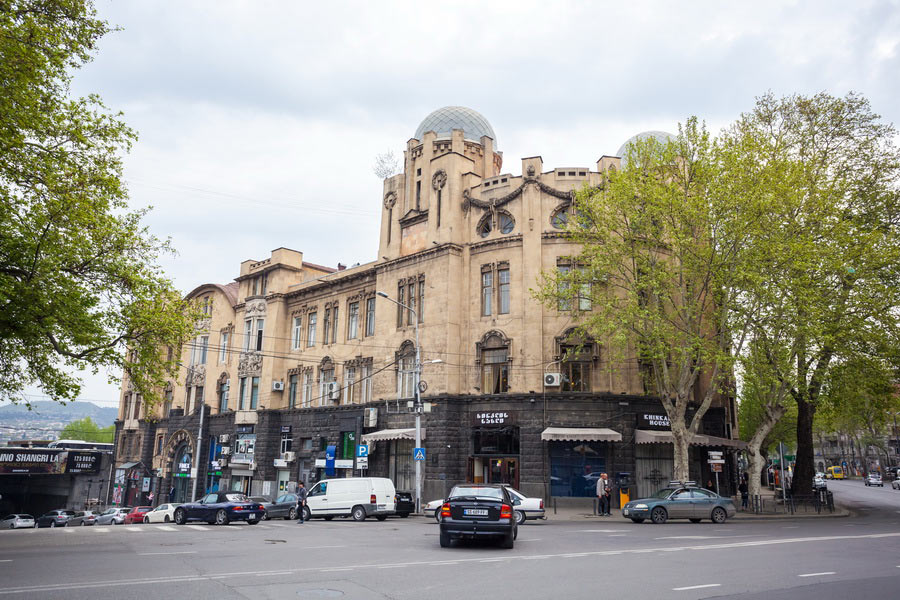House of Melik-Azaryants, Tbilisi

There is a huge house in Tbilisi that occupies a major part of the quarter. Among other urban buildings, it stands out not only with its impressive size, but also rather extravagant architecture. It was constructed relatively in short period for that times – they began in 1912 and managed to launch in three years. Unlike its peers, it had its own power supply, water pipes, heating; there were an art gallery and a garden full of exotic plants; cinema and a photo salon, and numerous other conveniences that people at that time could only dream of. This is all about the house of Melik-Azaryants –the symbol of old Tbilisi built according to the project of the architect Nikolay Obolonskiy.
When Tbilisi was called Tiflis, Aleksandr Melik-Azaryants, a merchant of the First Guild and the owner of oil deposit, was a famous, wealthy and generous resident of it. He was a member of the Board of Charity Community and openhanded to fund construction of hospitals, schools and churches. However, cruel life did not pass by the kind merchant: his favorite daughter Takui died at the age of 22. So overwhelmed by the grief of her loss and in order to soothe his pain from the tragedy, he invested all his strength into erection of a luxurious house in the center of Tiflis in the memory of his daughter. The merchant did not search for easy ways; the area he chose had rather complicated lay to put the foundation of the house. The building acquired a deep substructure surrounded with leaden framework so that underground waters would not wash it off. Such deep thought approach was an unprecedented case for the Caucasus of that period. Apart from that, builders had to drive piles in the rocky ground to keep the house from falling to the ravine.
Switching your attention to the exterior and a bizarre architecture of the House of Melik-Azaryants, one of the elements that eyes would catch is sculptures on the walls and numerous garlands. Garlands are nothing but mourning wreath expressing grief of the merchant for his daughter. The other details dedicated to Takiu are window frames on the upper layer in the corner of the building; they are done in the teardrop form. The first and partially the second floor are decorated with unpolished stone. The house is full of legends. One of them says that wealthy friends of Melik-Azaryants paid a visit during groundwork to throw money and jewelry to the foundation of the house for good luck. They also say that the idea of getting riches from there couldn’t leave some people, but it was not possible as the foundation came out very firm. After the revolution, the building was nationalized and Melik-Azaryants, who did not flee the country, was left without any means and moved to a small basement room in his own building.
The house is still called “Azaryants’s House” or just “Azaryants”. Splendid building with broad windows, towers and oriels mainly occupied by shops, but it has a residential area too. There is no way to skip this beautiful construction if you are walking in Rustaveli Avenue, and for those who know the history of Melik-Azaryants, it reminds of this unique and extraordinary person. Maybe it will remind you of him too, when you will explore Tbilisi.

